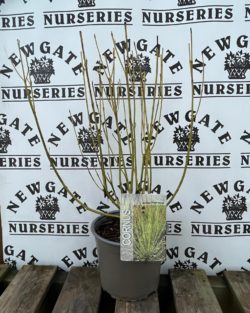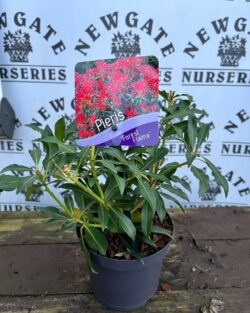Magnolia Stellata 60cm
£19.99
Plant Fact File:
- Plant Type: Deciduous Shrub or Small Tree
- Common Name: Star Magnolia
- Botanical Name: Magnolia stellata
- Growth Habit: Compact, Multi-Stemmed
- Height: 60cm (24 inches)
- Spread: 60cm (24 inches) – 90cm (35 inches)
- Foliage: Deciduous, Ovate Leaves
- Flower Color: White or Pale Pink
- Flowering Period: Early Spring
- Hardiness: Fully Hardy
- Aspect: Full Sun to Partial Shade
- Soil Type: Moist, Well-Draining
- Uses: Specimen Plant, Container Planting, Small Gardens
Description:
Magnolia stellata, commonly known as Star Magnolia, is a charming deciduous shrub or small tree known for its early spring blooms and compact growth habit. At a height of 60cm, it is often purchased as a young plant and can reach a spread of up to 90cm when fully established. Its ovate leaves emerge after flowering, providing a lush backdrop for the delicate star-shaped flowers.
Key Features:
- Early Spring Blooms: Magnolia stellata produces an abundance of star-shaped flowers in early spring, before the foliage emerges. The flowers range in color from white to pale pink and create a stunning display against the bare branches.
- Compact Growth Habit: With a height of 60cm, Magnolia stellata has a compact, multi-stemmed growth habit that makes it ideal for small gardens, container planting, or as a specimen plant in larger landscapes.
- Deciduous Foliage: The ovate leaves of Magnolia stellata are deciduous, meaning they fall off in autumn and reemerge in spring. This cycle allows the plant to showcase its beautiful flowers without obstruction during the blooming season.
- Hardy and Versatile: Magnolia stellata is fully hardy and can tolerate a wide range of growing conditions. It thrives in moist, well-draining soil and can be planted in full sun to partial shade, making it suitable for various garden settings.
- Early Spring Bloomer: One of the earliest flowering magnolias, Magnolia stellata adds color and interest to the garden when other plants are still dormant. Its early spring blooms attract pollinators such as bees and butterflies, contributing to garden biodiversity.
























